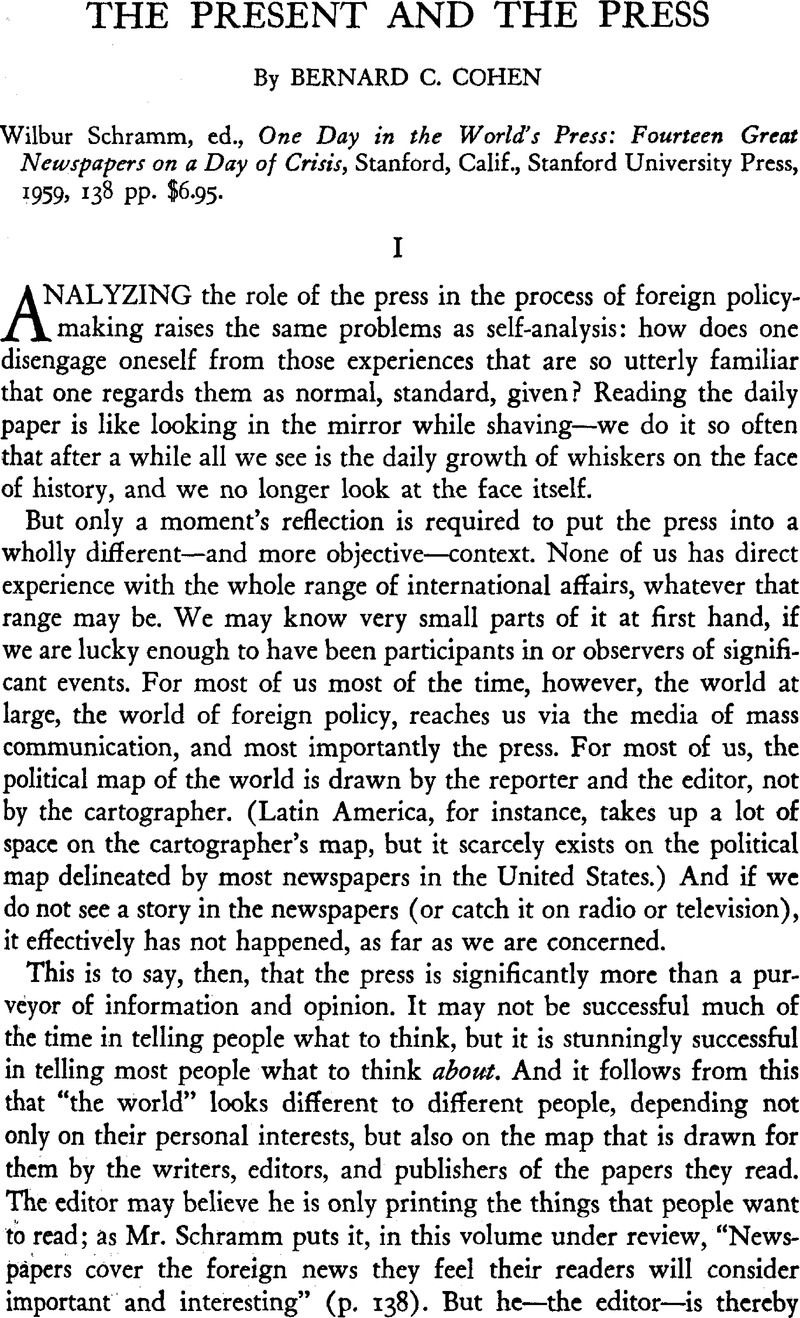Published online by Cambridge University Press: 18 July 2011

1 Pravda, Moscow; Le Monde, Paris; Trybuna Ludu, Warsaw; Frankfurter Allgemeine Zeitung, Frankfurt; Rude Pravo, Prague; Dagens Nyheter, Stockholm; Borba, Belgrade; Al Ahram, Cairo; Jen-min Jih-pao, Peking; Asahi, Tokyo; La Prensa, Buenos Aires; The Times of India, Bombay and Delhi; The Times, London; New York Times, New York.
2 But, while reading, the reader should turn the pages with care, lest the book come apart in his hands. This was obviously a costly book to produce, but one wishes that the publishers, having gone this far, had bound the results so that they would have survived more than one reading.
3 Mr. Schramm, in defending the press, supplies a basis for criticizing it: “If the pattern of events seems clearer now than it did on that day, let us not put too much blame on the world press, … for the perspective of daily history is very narrow” (p. 4).
4 Douglass Cater treats the press in this latter fashion, even though he calls his book on government and the press The Fourth Branch of Government (Boston, 1959).
5 This discussion builds on Gabriel A. Almond's analysis of the structure of public opinion on foreign policy, The American People and Foreign Policy, New York, 1950.
6 Figures compiled for the International Press Institute's study of The Flow of the News (Zurich, 1953)Google Scholar revealed that during the four weeks of the study, between October 1952 and January 1953, “The New York Times carried a daily average of about 32 columns of foreign dateline news stories, including their headlines,” while “the average newspaper among the 105 studies printed a little more than four columns a day of foreign dateline stories, including headlines” (p. 22).